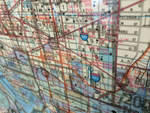The 1,441-room Schönbrunn Palace was designed for the Habsburgs by those masters of the baroque, the von Erlachs. It was built between 1696 and 1712 at the request of Emperor Leopold I for his son, Joseph I. Leopold envisioned a palace whose grandeur would surpass that of Versailles. However, Austria's treasury, drained by the cost of wars, would not support the ambitious undertaking; and the original plans were never carried out.
When Maria Theresa became empress, she changed the original plans; and Schönbrunn looks today much as she conceived it. Done in "Maria Theresa ochre," with delicate rococo touches designed for her by Austrian Nikolaus Pacassi, the palace is in complete contrast to the grim, forbidding Hofburg. Schönbrunn was the imperial summer palace during Maria Theresa's 40-year reign, and it was the scene of great ceremonial balls, lavish banquets, and fabulous receptions held during the Congress of Vienna. At the age of 6, Mozart performed in the Hall of Mirrors before Maria Theresa and her court. The empress held secret meetings with her chancellor, Prince Kaunitz, in the round Chinese Room.
Franz Joseph was born within the palace walls. It was the setting for the lavish court life associated with his reign, and he spent the final years of his life here. The last of the Habsburg rulers, Karl I, signed a document here on November 11, 1918, renouncing his participation in affairs of state -- not quite an abdication, but tantamount to one. Allied bombs damaged the palace during World War II, but restoration has obliterated the scars.
The Gloriette, a marble summerhouse topped by a stone canopy with an imperial eagle, embellishes the palace's Imperial Gardens. The so-called Roman Ruins (a collection of marble statues and fountains) date from the late 18th century, when it was fashionable to simulate the ravaged grandeur of Rome. Adria van Steckhoven laid out the park, which contains many fountains and heroic statues, often depicting Greek mythological characters. Visitors may enter until sunset daily.
The State Apartments are the most stunning display in the palace. Much of the interior ornamentation is in the rococo style, with red, white, and 23 1/2-karat gold predominating. Of the 40 rooms that you can visit, particularly fascinating is the Room of Millions, decorated with Indian and Persian miniatures -- a truly grand rococo salon.
Also on the grounds is the baroque Schlosstheater (Palace Theater; tel. 01/876-4272), which stages summer performances. The Wagenburg (Carriage Museum) (tel. 01/877-3244) is also worth a visit. It contains a fine display of imperial coaches from the 17th to 20th centuries.
We recommend the Imperial Tour for most visitors. It takes visitors to the private rooms of Franz Joseph and Elisabeth, a good look at the 18th and 19th century furnishings the royal family enjoyed. The Grand Tour takes nearly twice as long, and starts to feel repetitive.
Important: While a decent audio guide comes free with admission, most find that they get more out of a visit by paying a little extra for a live guide. Pretty much every tour company in the city offers tours here.






 About our rating system
About our rating system


